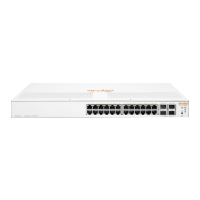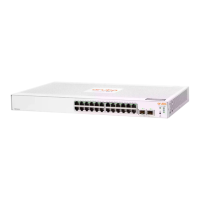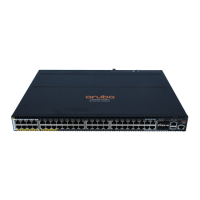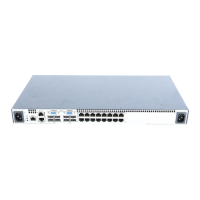Since the switch services outbound traffic according to priority (highest to lowest), the highest-priority outbound
traffic on a given port automatically receives the first priority in servicing. Thus, in most applications, it is
necessary only to specify the minimum bandwidth you want to allocate to the lower priority queues. In this case,
the high-priority traffic automatically receives all unassigned bandwidth without starving the lower-priority queues.
Conversely, configuring a bandwidth minimum on only the high-priority outbound queue of a port or static trunk
(and not providing a bandwidth minimum for the lower-priority queues) is not recommended, because it may
"starve" the lower-priority queues.
NOTE: For a given port, when the demand on one or more outbound queues exceeds the minimum
bandwidth configured for those queues, the switch apportions unallocated bandwidth to these
queues on a priority basis. As a result, specifying a minimum bandwidth for a high-priority queue but
not specifying a minimum for lower-priority queues can starve the lower-priority queues during
periods of high demand on the high priority queue. For example, if a port or static trunk configured to
allocate a minimum bandwidth of 80% for outbound high-priority traffic experiences a demand above
this minimum, this burst starves lower-priority queues that do not have a minimum configured.
Normally, this will not altogether halt lower priority traffic on the network, but will likely cause delays
in the delivery of the lower-priority traffic.
The sum of the GMB settings for all outbound queues on a given port or static trunk cannot exceed
100%.
Impacts of QoS queue configuration on GMB operation
The section Configuring GMB for outbound traffic on page 167 assumes the ports on the switch offer eight
prioritized, outbound traffic queues. This may not always be the case, however, because the switch supports a
QoS queue configuration feature that allows you to reduce the number of outbound queues from eight (the
default) to four queues, or two.
Changing the number of queues affects the GMB commands (interface bandwidth-min and show
bandwidth output) such that they operate only on the number of queues currently configured. If the queues
are reconfigured, the guaranteed minimum bandwidth per queue is automatically re-allocated according to the
following percentages:
Table 17: Default GMB percentage allocations per QoS queue configuration
802.1p priority 8 queues (default) 4 queues 2 queues
1 (lowest) 2% 10% 90%
2 3%
0 (normal) 30% 70%
3 10%
4 10% 10% 10%
5 10%
6 15% 10%
7 (highest) 20%
NOTE: For more information on queue configuration and the associated default minimum bandwidth
settings, see the "Quality of Service (QoS): managing bandwidth more effectively" in the advanced
traffic management guide for your switch.
166 Aruba 2930F / 2930M Management and Configuration Guide
for ArubaOS-Switch 16.08
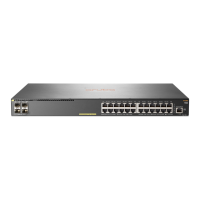
